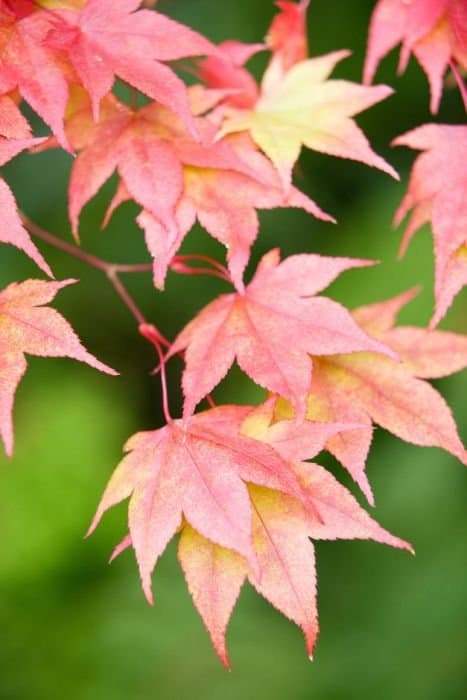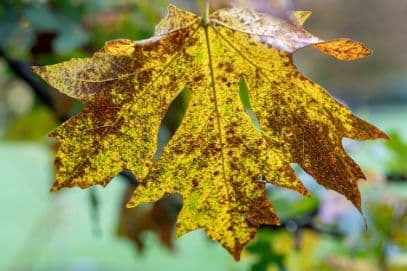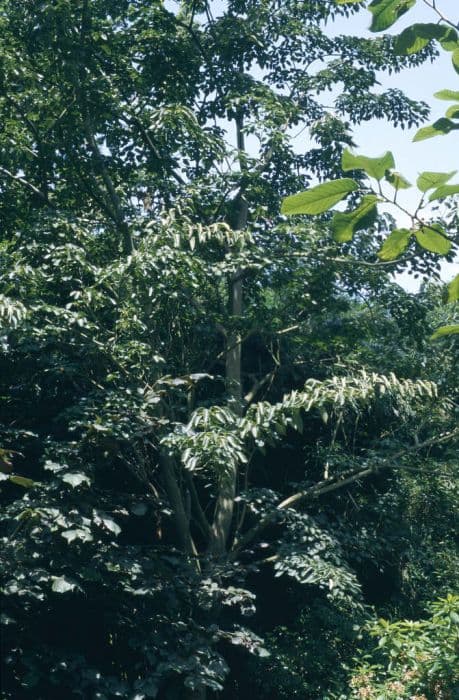Moonrise Full Moon Maple Acer shirasawanum Moonrise = 'Munn 001' (PBR)
![Shirasawa maple [Moonrise]](/_next/image?url=https%3A%2F%2Fplants-admin.emdemapps.com%2Fimages%2Fplants%2F%2Fimages%2F604b5dde58337.png&w=3840&q=75)
ABOUT
Acer shirasawanum 'Moonrise' is a visually striking variety of the Japanese maple family known for its distinctive foliage and beautiful color transformations throughout the growing seasons. At first glance, one might notice its leaves, which have a unique shape somewhat similar to that of a typical maple, but more heavily dissected and delicate, giving it a feathery appearance. The leaves begin in spring with a vibrant, almost fluorescent, pinkish-red hue on the edges that glow against the chartreuse to yellow-green color of the inner leaf. The finely cut foliage adds a soft, lacy texture to the landscape. As seasons change, the brilliance of the spring colors evolves into a lighter green, with the tips retaining a subtle reddish hue. In the right conditions, the plant will provide a second color display in the fall, when the leaves transform into the fiery tones of orange and red, mimicking the color of a sunset. This dramatic change offers a striking contrast, especially when backlit by the low autumn sun. The leaves attach to the plant by way of gracefully arching branches that create an overarching, dome-like form. These branches contribute to the plant's overall elegance and allow for a striking display of its colorful foliage. The plant remains highly ornamental through all seasons due to both its foliage and structural beauty. To complement its attractive leaves, during spring, the Acer shirasawanum 'Moonrise' also boasts small, inconspicuous flowers that add an additional layer of understated beauty. These flowers mature into winged seeds that are typical of maples, further embellishing the plant's appearance with their contrasting textures. Overall, the intricate beauty and seasonal color variations provided by the 'Moonrise' make it a captivating specimen for visual interest in the landscape. Its dramatic foliage and elegant branching structure create a focal point that draws the eye regardless of the time of year.
About this plant
 Names
NamesFamily
Sapindaceae.
Synonyms
Moonrise Full Moon Maple, Shirasawa Maple.
Common names
Acer shirasawanum 'Munn 001'
 Toxicity
ToxicityTo humans
The Japanese Maple, specifically the Acer shirasawanum 'Moonrise', is not known to be toxic to humans. There is no widespread documentation of toxicity from ingesting parts of this plant. However, as with any plant material, individual allergic reactions or irritation could occur, and it is generally recommended to avoid eating ornamental plants.
To pets
The Japanese Maple, to which Acer shirasawanum 'Moonrise' belongs, is also not considered to be toxic to pets such as dogs and cats. It is not known to cause systemic toxicity if ingested. However, it may still cause mild gastrointestinal upset in some pets if they consume large quantities, due to the non-digestible nature of plant material.
 Characteristics
CharacteristicsLife cycle
Perennials
Foliage type
Deciduous
Color of leaves
Mixed
Flower color
Varies
Height
8-10 feet (2.4-3 meters)
Spread
8-10 feet (2.4-3 meters)
Plant type
Tree
Hardiness zones
5
Native area
Japan
Benefits
 General Benefits
General Benefits- Ornamental Appeal: The Acer shirasawanum 'Moonrise' is highly valued for its stunning foliage that changes color throughout the seasons, offering visual interest from spring to fall.
- Compact Size: Its relatively small size makes it suitable for gardens with limited space or for growing in containers.
- Shade Tolerance: 'Moonrise' can grow in partial shade, providing flexibility in landscaping options.
- Low Maintenance: Once established, it requires minimal upkeep, making it ideal for both novice and expert gardeners.
- Drought Tolerance: After establishment, it can tolerate periods of low water availability, reducing the need for frequent watering.
- Cold Hardy: It is capable of withstanding cooler temperatures, allowing it to thrive in many climates.
- Attracts Wildlife: The tree provides habitat and food for birds and beneficial insects, supporting local ecosystems.
 Medical Properties
Medical PropertiesThis plant is not used for medical purposes.
 Air-purifying Qualities
Air-purifying QualitiesThis plant is not specifically known for air purifying qualities.
 Other Uses
Other Uses- Craft Material: The wood of the Moonrise Maple can be used for small woodworking projects such as making jewelry or decorative boxes due to its fine grain and workability.
- Photography Backdrop: The striking foliage of the Moonrise Maple, especially during the fall, can serve as a vibrant backdrop for outdoor photography.
- Bonsai: Due to its interesting leaf shape and color, the Moonrise Maple can be cultivated as a bonsai tree for ornamental purposes.
- Leaf Casts: Artists may use the distinctive leaves of the Moonrise Maple to create detailed leaf castings for decorative art pieces.
- Maple Syrup: Although not commonly used for syrup production, the sap of the Moonrise Maple can theoretically be tapped and processed to make a unique, artisanal maple syrup.
- Education: The tree can be used in educational settings such as schools or botanical gardens to teach about Japanese maple varieties and plant taxonomy.
- Culinary Decoration: The colorful leaves, when untreated, can sometimes be used for plating and presentation in high-end culinary establishments.
- Landscape Photography: The Moonrise Maple's distinctive appearance through the seasons offers a valuable subject for landscape photographers documenting seasonal changes.
- Eco-friendly Confetti: Dried and crumbled leaves can be used as a biodegradable confetti alternative for outdoor celebrations.
- Literary Inspiration: The serene and picturesque look of the Moonrise Maple can serve as an inspiration to writers and poets for its aesthetic beauty and embodiment of changing seasons.
Interesting Facts
 Feng Shui
Feng ShuiThe Japanese Maple is not typically used in Feng Shui practice.
 Zodiac Sign Compitability
Zodiac Sign CompitabilityThe Japanese Maple is not used in astrology practice.
 Plant Symbolism
Plant Symbolism- Change and Transformation: The Acer shirasawanum Moonrise, commonly known as the Japanese Maple 'Moonrise', undergoes a stunning transformation in foliage color throughout the seasons, symbolizing life's ever-changing nature.
- Peace and Serenity: With its delicate leaves and calming presence, the Japanese Maple 'Moonrise' evokes a sense of peace and tranquility, making it a symbol of harmony and relaxation.
- Endurance and Strength: Despite its graceful appearance, the Japanese Maple 'Moonrise' is a hardy plant that can withstand challenging conditions, representing inner strength and the ability to endure life's hardships.
- Unique Beauty: The Japanese Maple 'Moonrise' is known for its unique coloring and structure, symbolizing the beauty of being unique and the value of standing out from the crowd.
 Water
WaterJapanese Maple 'Moonrise' should be watered deeply to saturate the root zone and then allowed to dry out somewhat before watering again; frequency depends on weather conditions and soil type but generally once a week during dry periods. For established plants, aim for about 1 inch of water per week, whether from rainfall or irrigation. If using a garden hose or watering can, this might equate to 15-20 gallons spread out over the root area. Adjust watering in response to rainfall, reducing it during wet periods and increasing it during drought.
 Light
LightJapanese Maple 'Moonrise' thrives in partial shade to full sun; however, in areas with particularly hot summers, it is best to provide afternoon shade to prevent leaf scorch. The ideal spot for planting is where the tree will receive morning sunlight and some protection from the intense afternoon heat, ensuring the delicate foliage does not get damaged.
 Temperature
TemperatureJapanese Maple 'Moonrise' prefers a temperate climate and can generally tolerate a temperature range from about -10 to 140 degrees Fahrenheit, but the ideal conditions for robust growth are daytime temperatures ranging from 70 to 80 degrees Fahrenheit. This plant may suffer damage if exposed to extremes outside of this range, particularly if a sudden frost hits when the tree has new foliage.
 Pruning
PruningPrune Japanese Maple 'Moonrise' to maintain its health and shape, focusing on removing any dead or diseased wood. The best time for pruning is during the dormant season, in late winter or early spring before new growth starts. Pruning should be done sparingly; usually once a year is enough as the tree has a naturally attractive shape.
 Cleaning
CleaningAs needed
 Soil
SoilFor Japanese Maple 'Moonrise' a well-draining, acidic to neutral potting mix is ideal. A mix of loamy soil, peat, and perlite or pumice would provide good aeration and moisture control. Aim for a soil pH between 5.5 and 7.5.
 Repotting
RepottingJapanese Maple 'Moonrise' should generally be repotted every 2-3 years, in the early spring before the growing season begins.
 Humidity & Misting
Humidity & MistingJapanese Maple 'Moonrise' prefers average to high humidity levels, ideally around 60-80%, but is adaptable to lower humidity conditions outside this range.
 Suitable locations
Suitable locationsIndoor
Place in bright, indirect light; protect from hot sun and dry air.
Outdoor
Choose partial shade; shelter from wind and extreme temps.
Hardiness zone
5-7 USDA
 Life cycle
Life cycleAcer shirasawanum 'Moonrise', commonly known as Full Moon Maple, begins its life cycle when seed germination occurs in the spring, given appropriate conditions of moisture and temperature. Once germinated, the seedling stage involves the development of roots, a shoot that emerges above the soil, and the first pair of leaves. As the plant enters the juvenile phase, it experiences rapid growth, with multiple leaves and branches developing, often taking several years before reaching maturity. The mature Full Moon Maple is characterized by vibrant spring foliage that starts out a bright red, then turns green as it ages, and finally a brilliant red in the fall; during this phase, it also begins to reproduce by producing seeds, typically in the form of paired samaras. These seeds are then dispersed, sometimes by wind or animal activity, to initiate the next generation. Throughout its lifetime, which can extend over several decades, the Full Moon Maple experiences annual periods of dormancy in winter, with growth resuming each subsequent spring.
 Propogation
PropogationPropogation time
Early spring
Propogation: The most popular method of propagating the Japanese maple 'Moonrise' is through softwood cuttings, usually undertaken in early summer when the new shoots are just beginning to harden but are not yet fully mature. The cuttings, typically 4-6 inches (10-15 cm) long, are taken with a clean, sharp pair of shears to ensure a precise cut. The bottom leaves are stripped off, and the cut end is dipped into a rooting hormone to encourage root growth. The prepared cuttings are then inserted into a potting mix that ensures good drainage, such as a blend of peat and perlite, and the pot is kept moist but not waterlogged. It's essential to provide a humid environment to prevent the cutting from drying out, which can be achieved by loosely covering the cutting with a plastic bag or placing it in a propagator. This method can take several weeks to months for roots to develop, after which the new Japanese maple can be gradually acclimated to less humid conditions and eventually transplanted outdoors.









